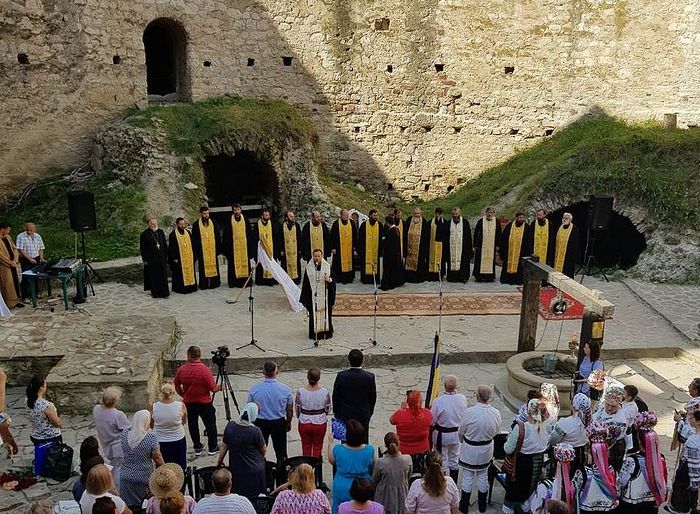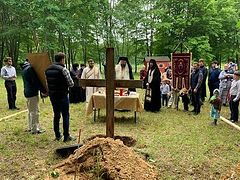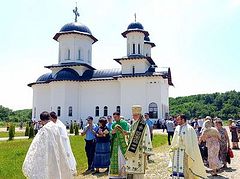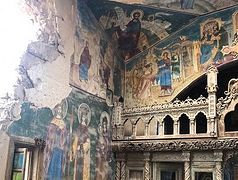Suceava, July 2, 2019
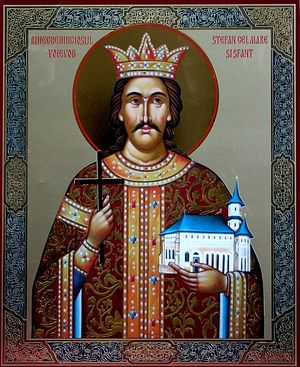 Photo: Crestin Ortodox Yesterday, the Moldovan Orthodox Church as well as the Romanian Orthodox Church celebrated the feast day of their right-believing Stefan the Great, Voivode of Moldova. This great saint has a connection to the Church of Rus’ as well, in that the ancestor of the Holy Hierarch and Metropolitan of Kiev Petro Mohyla received the noble family name Mohyla (from the Romanian Movila, meaning hill) as a reward for loyalty from Saint Stefan.
Photo: Crestin Ortodox Yesterday, the Moldovan Orthodox Church as well as the Romanian Orthodox Church celebrated the feast day of their right-believing Stefan the Great, Voivode of Moldova. This great saint has a connection to the Church of Rus’ as well, in that the ancestor of the Holy Hierarch and Metropolitan of Kiev Petro Mohyla received the noble family name Mohyla (from the Romanian Movila, meaning hill) as a reward for loyalty from Saint Stefan.
In the Romanian Orthodox Church, festal liturgies were celebrated all across the country. One such hierarchal liturgy can be watched here.
In Moldova, after services, a folk festival was held outside the walls of a formidable Moldovan fortress, attended by Metropolitan Vladimir of Chișinău and All Moldova.
The military feats of Stefan the Great were in fact far greater than his cousin’s, the infamous Vlad the Impaler, albeit the latter is much better known (and in the point of view of some, slandered) in the West,
Saint Stefan defended his country valiantly against the Turks, but was remembered even greater for building churches and monasteries—according to tradition, at least one church during every year of his reign.
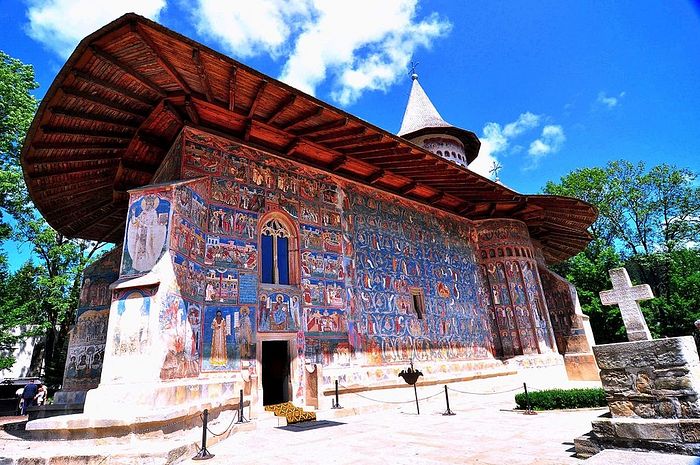 Voroneț Monastary, built by Saint Stefan, is famous for its unique color of blue in the iconography. Photo: Wikipedia.
Voroneț Monastary, built by Saint Stefan, is famous for its unique color of blue in the iconography. Photo: Wikipedia.
Saint Stefan’s spiritual father, Saint Daniel the Hesychast told him that if he built a church after every battle, he would be victorious in all his campaigns.
Saint Stephan won forty-seven battles and built forty-eight churches or monasteries including Putna monastery where he was buried. In 2018, the Patriarch of Romania blessed a reconstructed crown of Saint Stefan in Putna monastery. In Moldova, the entire year of 2018 was dedicated to Saint Stefan by Metropolitan Vladimir of Moldova, and President Igor Dodon.
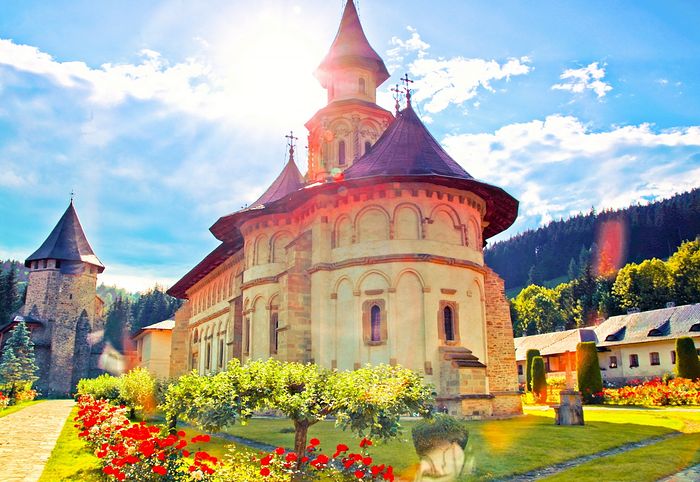 Putna Monastery. Photo: Wikipedia
Putna Monastery. Photo: Wikipedia
Saint Stefan helped develop a distinctive Moldovan style of church architecture, which is also obvious in Sucevița Monastery, built by the Movilă (Movilești) family of boyars, who received their name and titles from Saint Stefan, specifically by Ieremia and his brother Simion Movilă, the Father of Saint Petro Mohyla of Kiev (aka Movilă or Mogila) who lived around two hundred years after Saint Stefan.
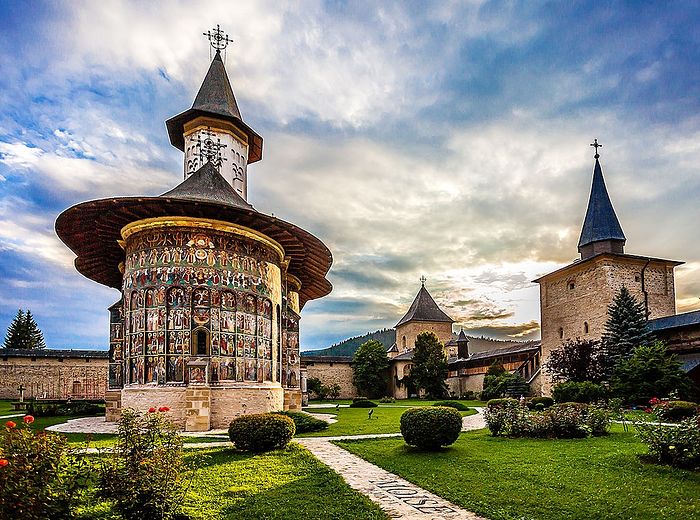 Sucevița Monastery built by the family of Saint Petro Mohyla. Photo: Wikipedia
Sucevița Monastery built by the family of Saint Petro Mohyla. Photo: Wikipedia
This connection only furthers the brotherly bonds between all Orthodox Christians and all Orthodox nations.
The title of Stefan the Great, “Voivode” is Slavic, literally meaning “War Lord”, though in Moldova, it was somewhat like their King or Prince. Voivode, understood in the context of “general”, is the way the Slavic Kontakion to the Mother of God is translated “To thee the Champion General”. It can be heard in Slavonic here.
This hymn is known in Romanian as Apărătoare Doamnă, and can be heard here in beautiful Romanian chant. In general, the Romanian and Moldovan traditions are somewhat in between the Byzantine and Slavic customs, and the people, as the last surviving members of the East Latin language family, often describe themselves as a Latin island in a sea of Slavs.
Saint Stefan, however, is a figure which all can unite around, as a reminder that all Orthodox are one in Christ.
Matfey Shaheen

